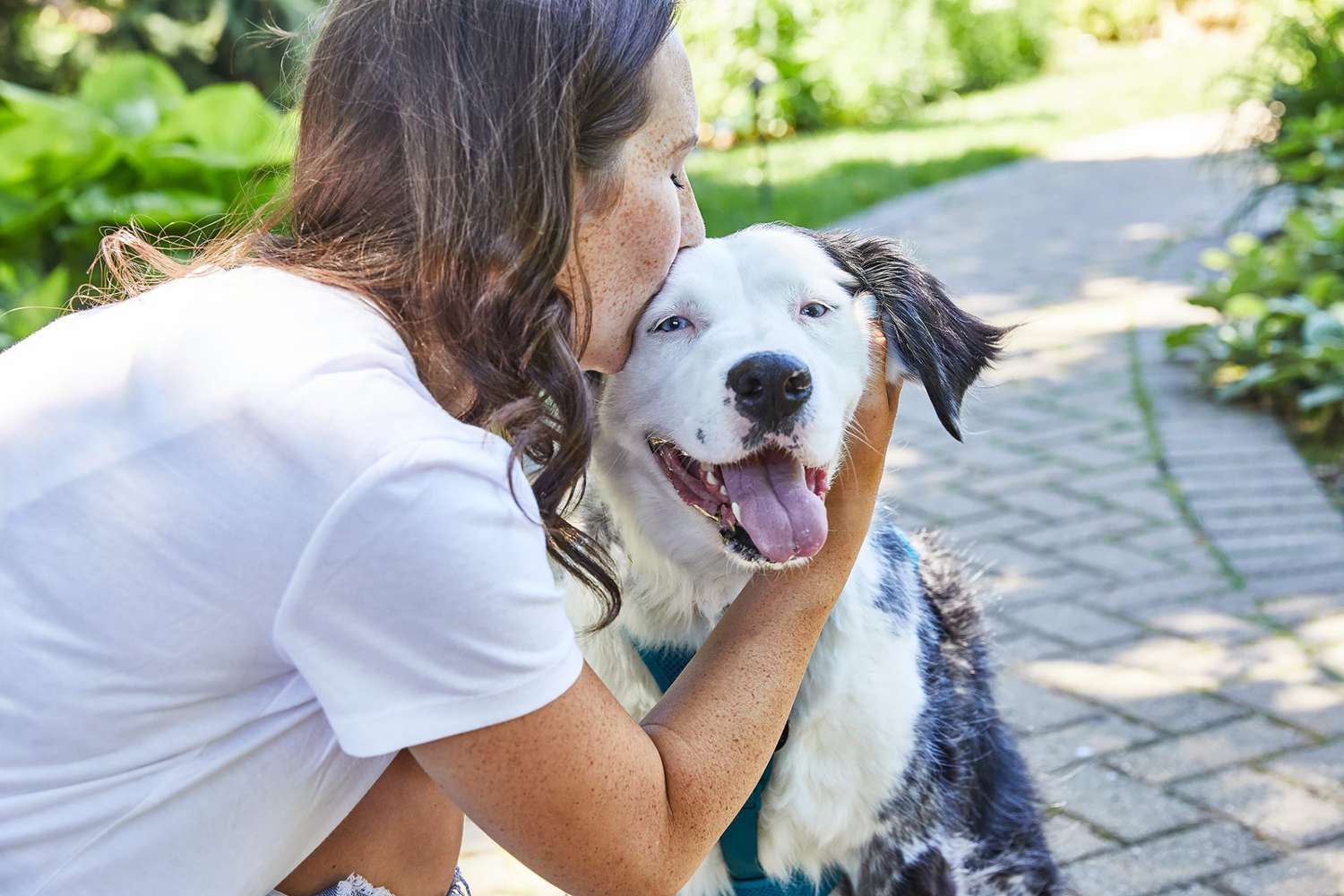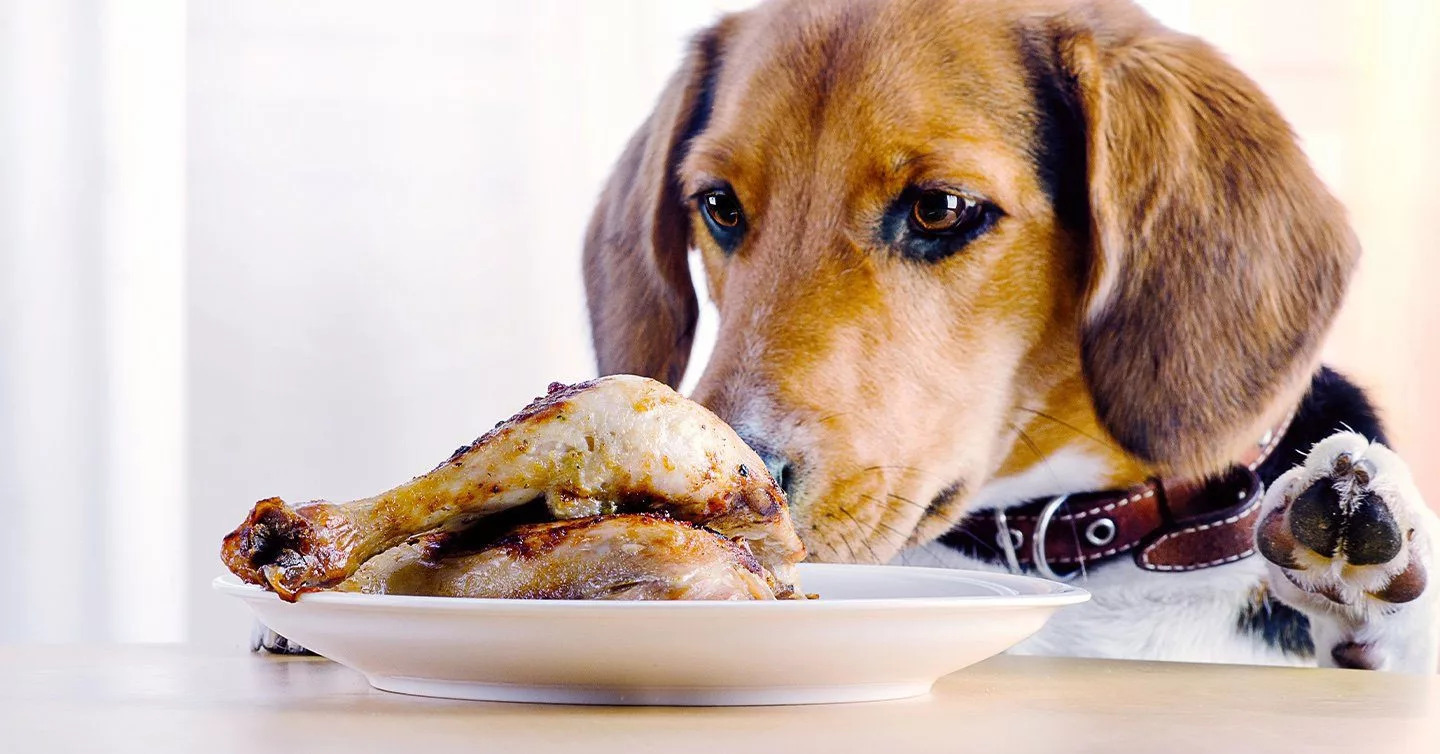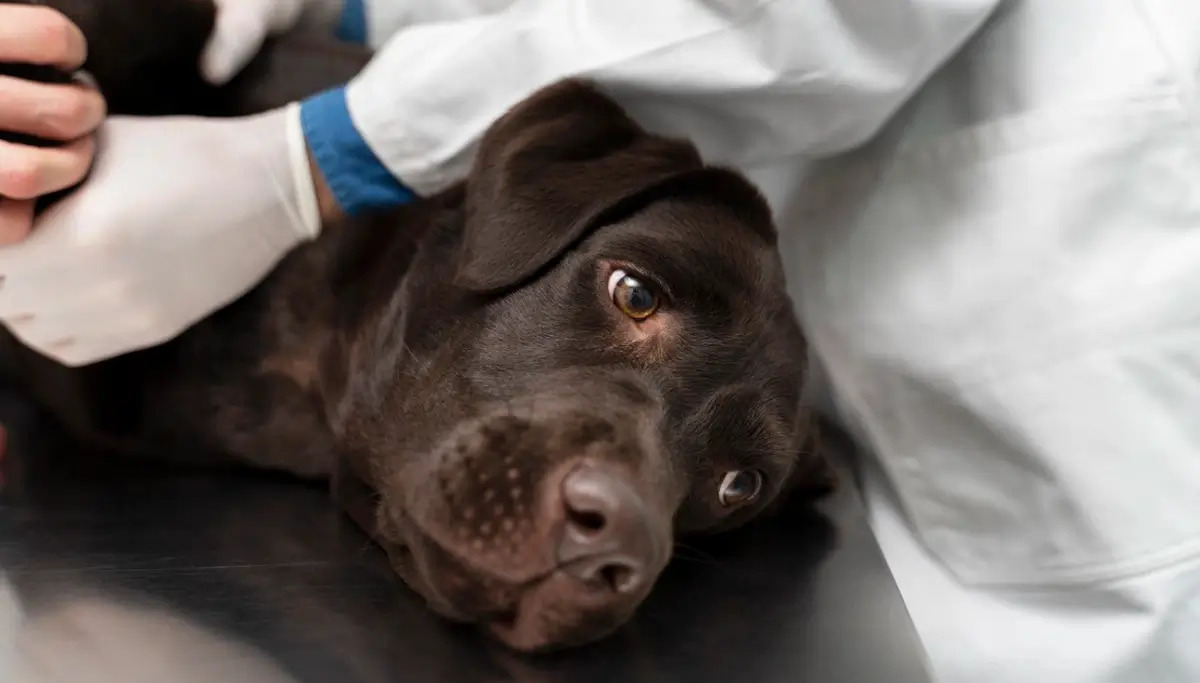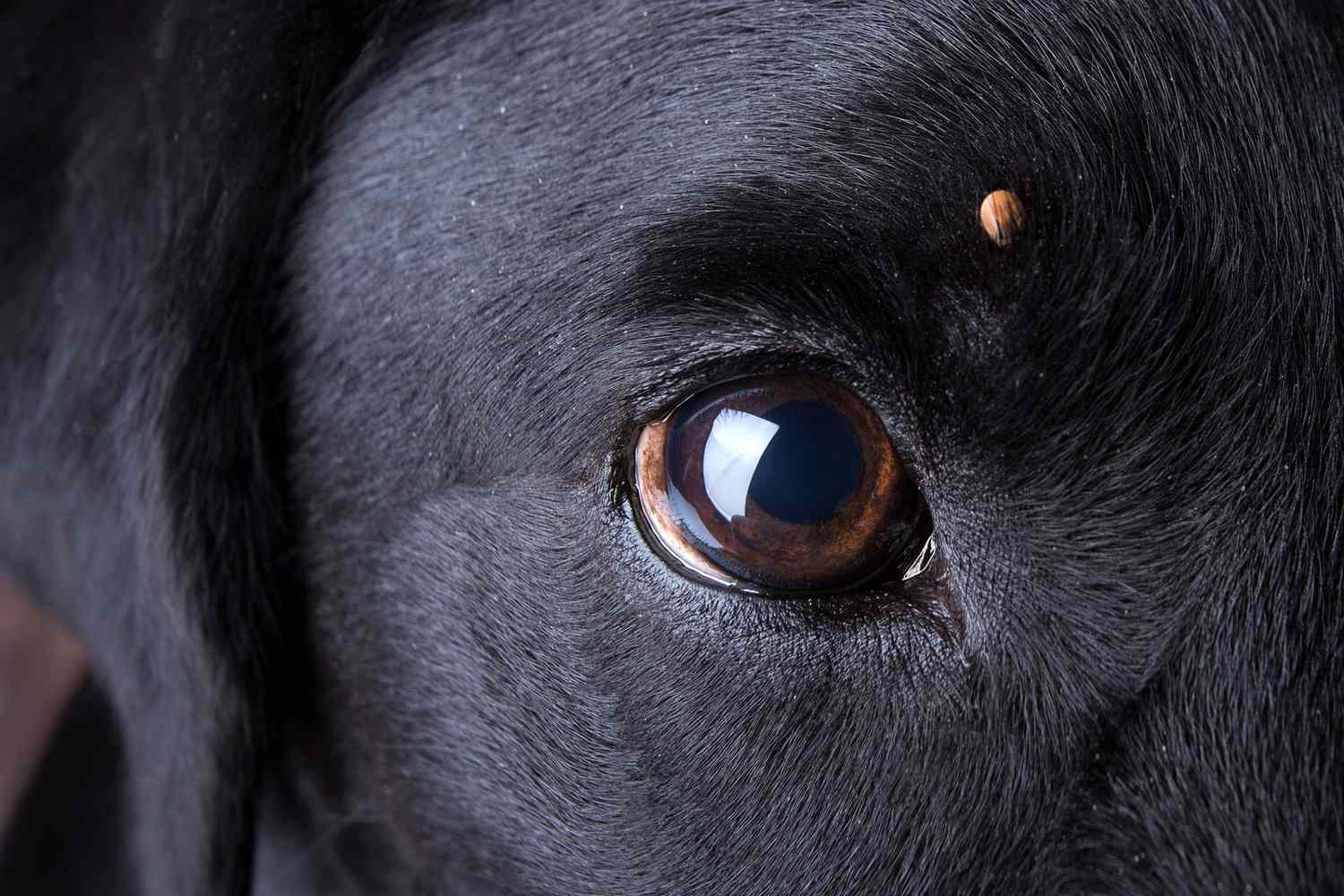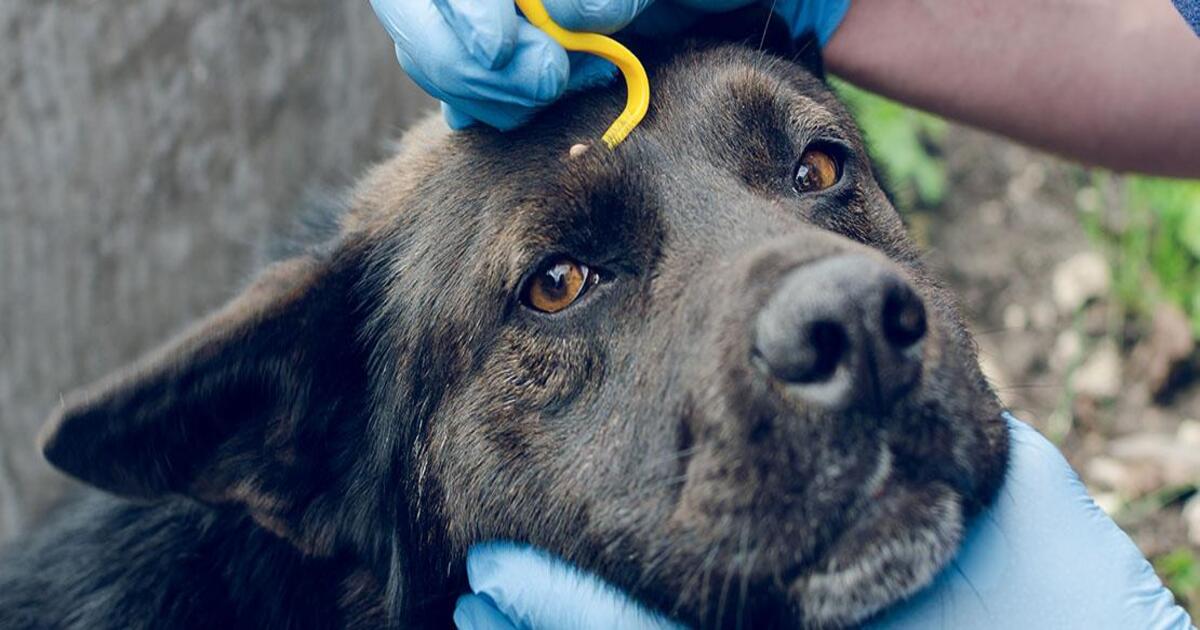Home>Health & Wellness>Common Health Issues>What Happens When A Dog Has Stomach Cancer


Common Health Issues
What Happens When A Dog Has Stomach Cancer
Published: February 4, 2024
Learn about common health issues in dogs, including stomach cancer symptoms and treatment. Understand what happens when a dog has stomach cancer and how to manage it effectively.
(Many of the links in this article redirect to a specific reviewed product. Your purchase of these products through affiliate links helps to generate commission for Pawsomeoldies.com, at no extra cost. Learn more)
Table of Contents
Introduction
Stomach cancer, also known as gastric cancer, is a concerning health issue that can affect our beloved canine companions. This condition arises when malignant cells develop in the stomach lining, potentially leading to a range of symptoms and complications. As responsible pet owners, it's crucial to be aware of the signs of stomach cancer in dogs and understand the available diagnostic and treatment options.
In this article, we will delve into the intricacies of stomach cancer in dogs, shedding light on the symptoms, diagnosis, treatment, prognosis, and ways to support a dog facing this challenging condition. By gaining a deeper understanding of stomach cancer and its impact on our furry friends, we can equip ourselves with the knowledge needed to provide them with the best possible care and support.
Throughout this exploration, we'll navigate the complexities of stomach cancer in dogs with empathy and a commitment to empowering pet owners with valuable insights. Let's embark on this journey to unravel the nuances of stomach cancer in dogs and discover how we can make a positive difference in the lives of our canine companions.
Read more: What Happens When A Dog Has Colon Cancer
Understanding Stomach Cancer in Dogs
Stomach cancer in dogs, medically referred to as gastric cancer, is a formidable health concern that necessitates a comprehensive understanding to effectively address its impact on our furry companions. This condition originates from the uncontrolled growth of malignant cells within the stomach lining, potentially leading to a range of distressing symptoms and complications. While the exact causes of stomach cancer in dogs remain elusive, certain factors such as genetics, diet, and environmental influences may contribute to its development.
The onset of stomach cancer can be insidious, often progressing silently before manifesting noticeable symptoms. As the malignant cells proliferate, they can infiltrate the stomach wall and impede its normal functions, leading to digestive disturbances and discomfort for the affected dog. The intricate nature of this condition underscores the importance of vigilance and proactive measures to detect and address it in its early stages.
Understanding the nuances of stomach cancer in dogs involves recognizing the potential risk factors and predisposing conditions that may elevate the likelihood of its occurrence. Additionally, being attuned to the subtle signs that may indicate the presence of this condition is crucial for timely intervention and management. By delving into the intricacies of stomach cancer in dogs, we can equip ourselves with the knowledge needed to navigate this challenging terrain and provide our canine companions with the care and support they deserve.
In the next sections, we will explore the symptoms of stomach cancer in dogs, delve into the diagnostic and treatment options available, and gain insights into the prognosis and life expectancy associated with this condition. By unraveling the complexities of stomach cancer in dogs, we can foster a deeper understanding of this health issue and pave the way for informed decision-making and compassionate support for our beloved pets.
Symptoms of Stomach Cancer in Dogs
Identifying the symptoms of stomach cancer in dogs is pivotal in facilitating early detection and intervention, thereby enhancing the prospects for effective management and care. While the manifestations of this condition can vary, several common symptoms may serve as red flags, prompting pet owners to seek veterinary attention promptly.
-
Digestive Disturbances: Dogs with stomach cancer may exhibit persistent digestive issues such as vomiting, diarrhea, or constipation. These symptoms can be indicative of underlying gastrointestinal disruptions caused by the presence of malignant cells in the stomach lining.
-
Loss of Appetite: A noticeable decrease in appetite, coupled with a reluctance to eat or sudden disinterest in food, can signal potential health concerns, including stomach cancer. This change in eating behavior may be accompanied by unexplained weight loss, further underscoring the need for thorough evaluation.
-
Abdominal Discomfort: Dogs affected by stomach cancer may display signs of abdominal discomfort, such as restlessness, pacing, or reluctance to be touched in the abdominal area. This discomfort can stem from the presence of tumors or the disruption of normal stomach function.
-
Lethargy and Weakness: Stomach cancer can contribute to a general sense of lethargy and weakness in affected dogs. This may manifest as reduced activity levels, reluctance to engage in physical activities, and an overall lack of energy.
-
Bloody Stools or Vomit: The presence of blood in the stools or vomit of a dog warrants immediate attention, as it can signify various underlying health issues, including stomach cancer. This alarming symptom necessitates prompt veterinary assessment to ascertain the underlying cause and initiate appropriate measures.
-
Paleness and Anemia: Dogs with stomach cancer may experience paleness of the gums and mucous membranes, often accompanied by symptoms of anemia such as weakness, fatigue, and rapid breathing. These indicators underscore the systemic impact of the condition and the need for comprehensive evaluation.
-
Unexplained Pain: Dogs may exhibit signs of discomfort or pain, which can be challenging to discern but may manifest as changes in behavior, vocalization, or reluctance to engage in normal activities.
By recognizing these potential symptoms of stomach cancer in dogs, pet owners can play a proactive role in safeguarding the well-being of their canine companions. It is essential to remain vigilant and responsive to any concerning changes in a dog's health, seeking prompt veterinary guidance to address potential issues effectively.
In the subsequent section, we will delve into the diagnostic procedures and treatment options available for dogs diagnosed with stomach cancer, shedding light on the proactive measures that can be undertaken to support their well-being.
Diagnosis and Treatment Options
Diagnosing stomach cancer in dogs entails a multifaceted approach aimed at elucidating the extent of the condition and formulating an effective treatment strategy. When a dog presents with symptoms suggestive of stomach cancer, the veterinarian may initiate the diagnostic process by conducting a thorough physical examination and obtaining a comprehensive medical history. This initial assessment serves as a crucial foundation for further investigations, enabling the veterinarian to gain valuable insights into the dog's overall health and the specific manifestations of the suspected condition.
Following the preliminary evaluation, diagnostic imaging techniques such as X-rays, ultrasound, or advanced imaging modalities like CT scans may be employed to visualize the internal structures of the stomach and identify any abnormalities or irregularities. These imaging studies can provide valuable information regarding the presence of tumors, the extent of their spread, and their impact on surrounding tissues. Additionally, the veterinarian may opt to perform endoscopy, a minimally invasive procedure that involves the insertion of a flexible scope into the dog's stomach to visualize the internal lining and obtain tissue samples for further analysis.
Upon obtaining tissue samples through endoscopy or other means, the veterinarian may proceed with histopathological examination, wherein the collected tissues are scrutinized under a microscope to ascertain the presence of cancerous cells and characterize the specific nature of the malignancy. This meticulous analysis plays a pivotal role in confirming the diagnosis of stomach cancer and delineating its histological features, thereby guiding the formulation of an appropriate treatment plan.
Once a definitive diagnosis of stomach cancer is established, the veterinarian collaborates with the pet owner to devise a tailored treatment approach that aligns with the dog's individual needs and the specific characteristics of the condition. Treatment options for stomach cancer in dogs may encompass a combination of surgical intervention, chemotherapy, radiation therapy, and supportive care measures aimed at alleviating symptoms and enhancing the dog's quality of life.
Surgical resection of the tumors, when feasible, may be recommended to remove the cancerous growths and mitigate their impact on the dog's gastrointestinal function. In cases where the cancer has metastasized or surgical intervention is not viable, chemotherapy and radiation therapy may be employed to target and shrink the tumors, alleviate symptoms, and impede the progression of the disease. Additionally, palliative care measures such as dietary modifications, pain management, and supportive therapies play a crucial role in enhancing the well-being of dogs undergoing treatment for stomach cancer.
It is imperative for pet owners to maintain open communication with the veterinary team, actively participate in the treatment decision-making process, and provide compassionate support to their canine companions throughout the diagnostic and treatment journey. By fostering a collaborative and empathetic approach, pet owners can play a pivotal role in advocating for the best possible care for their dogs and navigating the complexities of stomach cancer with resilience and compassion.
In the subsequent section, we will delve into the prognosis and life expectancy associated with stomach cancer in dogs, shedding light on the factors that influence the outcomes of this condition and the ways to support dogs facing this challenging diagnosis.
Prognosis and Life Expectancy
The prognosis and life expectancy for dogs diagnosed with stomach cancer are influenced by a myriad of factors, encompassing the specific characteristics of the malignancy, the extent of its spread, the dog's overall health, and the responsiveness to treatment. While stomach cancer in dogs presents significant challenges, the prognosis can vary widely based on individual circumstances and the proactive measures undertaken to address the condition.
In cases where stomach cancer is detected in its early stages and the tumors are localized, prompt intervention through surgical resection may offer a more favorable prognosis. By surgically removing the cancerous growths and implementing adjunctive therapies, such as chemotherapy or radiation, the progression of the disease can be mitigated, potentially extending the dog's life expectancy and enhancing its quality of life.
However, when stomach cancer has advanced or metastasized to other organs, the prognosis may be more guarded, necessitating a comprehensive approach focused on palliative care and symptom management. While the primary goal in such cases may shift from curative measures to enhancing the dog's comfort and well-being, proactive interventions can still play a crucial role in alleviating distressing symptoms and optimizing the dog's quality of life.
The response to treatment also plays a pivotal role in shaping the prognosis for dogs with stomach cancer. Some dogs may exhibit a positive response to therapeutic interventions, experiencing a reduction in tumor size, alleviation of symptoms, and an improved overall condition. Conversely, others may demonstrate a more resistant disease course, posing challenges in managing the condition and influencing the anticipated life expectancy.
Additionally, the overall health and resilience of the affected dog contribute to the prognosis and life expectancy associated with stomach cancer. Dogs with robust immune systems and a strong physiological constitution may demonstrate enhanced tolerance to treatment modalities and a greater capacity to withstand the challenges posed by the malignancy, potentially extending their life expectancy and fostering a more positive prognosis.
Amidst the complexities of stomach cancer in dogs, it is essential for pet owners to maintain open communication with the veterinary team, seek comprehensive guidance on the available treatment options, and provide unwavering support to their canine companions. By fostering a collaborative and empathetic approach, pet owners can navigate the nuances of the prognosis and life expectancy associated with stomach cancer, empowering themselves to make informed decisions and advocate for the best possible care for their beloved pets.
In the subsequent section, we will delve into the ways to support a dog diagnosed with stomach cancer, encompassing compassionate measures aimed at enhancing their well-being and fostering a nurturing environment.
Read more: What Happens When Dogs Get Cancer
Supporting a Dog with Stomach Cancer
Supporting a dog diagnosed with stomach cancer entails a multifaceted approach aimed at fostering their well-being, alleviating distressing symptoms, and nurturing a compassionate environment that enhances their quality of life. As pet owners, it is paramount to cultivate a supportive and empathetic atmosphere that prioritizes the physical and emotional needs of the affected dog, fostering resilience and comfort throughout their journey with this challenging diagnosis.
Compassionate Care and Comfort
Providing compassionate care forms the cornerstone of supporting a dog with stomach cancer. This encompasses creating a comfortable and nurturing environment that minimizes stress and promotes relaxation. Ensuring that the dog has a cozy and tranquil resting space, free from excessive noise and commotion, can contribute to their overall well-being. Additionally, maintaining a consistent routine and offering gentle reassurance can provide a sense of security and stability for the affected dog, fostering a supportive atmosphere that acknowledges their unique needs.
Nutritional Support and Dietary Modifications
Nutritional support plays a pivotal role in supporting dogs with stomach cancer, particularly in addressing their dietary requirements and optimizing their nutritional intake. Collaborating with the veterinary team to devise a tailored dietary plan that aligns with the dog's specific needs and digestive sensitivities is essential. This may involve selecting easily digestible foods, offering smaller and more frequent meals, and incorporating dietary supplements to bolster their nutritional status. By prioritizing their nutritional well-being, pet owners can contribute to the dog's overall strength and resilience in the face of this challenging condition.
Pain Management and Comfort Measures
Addressing pain and discomfort is paramount in supporting a dog with stomach cancer. Open communication with the veterinary team regarding the dog's pain levels and implementing appropriate pain management strategies is crucial. This may involve the use of prescribed medications, such as analgesics or anti-inflammatory drugs, to alleviate discomfort and enhance the dog's overall comfort. Additionally, providing soft bedding and gentle handling, while minimizing physical exertion, can contribute to their comfort and well-being.
Read more: What Happens When A Dog Gets Tick Paralysis
Emotional Support and Bonding
Emotional support and bonding play a pivotal role in nurturing the well-being of a dog facing stomach cancer. Spending quality time with the affected dog, engaging in gentle activities, and offering reassuring gestures can foster a sense of security and emotional connection. Maintaining a supportive and affectionate demeanor, while being attuned to the dog's cues and needs, can contribute to their emotional resilience and overall well-being.
Open Communication and Collaboration
Maintaining open communication with the veterinary team and actively participating in the dog's care plan fosters a collaborative approach that prioritizes their well-being. Seeking comprehensive guidance on the available support measures, treatment options, and potential challenges enables pet owners to make informed decisions and advocate for the best possible care for their beloved pets.
By embracing these supportive measures with empathy and dedication, pet owners can play a pivotal role in nurturing the well-being of their dogs diagnosed with stomach cancer, fostering a compassionate environment that prioritizes their comfort, resilience, and quality of life.
Conclusion
In navigating the complexities of stomach cancer in dogs, we have embarked on a journey to unravel the nuances of this formidable health issue and explore the multifaceted dimensions of its impact on our beloved canine companions. Through a comprehensive understanding of the symptoms, diagnostic procedures, treatment options, prognosis, and supportive measures, we have equipped ourselves with valuable insights to advocate for the well-being of dogs facing this challenging diagnosis.
The recognition of potential symptoms such as digestive disturbances, loss of appetite, and abdominal discomfort serves as a crucial foundation for proactive intervention, prompting pet owners to seek veterinary guidance and facilitate early detection. By remaining vigilant and responsive to any concerning changes in a dog's health, we can play a pivotal role in safeguarding their well-being and advocating for the best possible care.
The diagnostic and treatment journey for dogs with stomach cancer encompasses a collaborative approach, wherein open communication with the veterinary team and active participation in the decision-making process are paramount. By embracing tailored treatment strategies, including surgical intervention, chemotherapy, and supportive care measures, we can navigate the complexities of this condition with resilience and compassion, prioritizing the dog's comfort and quality of life.
The prognosis and life expectancy associated with stomach cancer in dogs are influenced by a myriad of factors, underscoring the need for comprehensive guidance and unwavering support from pet owners. By fostering a nurturing environment that prioritizes compassionate care, nutritional support, pain management, and emotional bonding, we can enhance the resilience and well-being of dogs facing this challenging diagnosis.
In conclusion, the journey through stomach cancer in dogs is marked by compassion, resilience, and unwavering dedication to advocating for the best possible care. By embracing a multifaceted approach that encompasses proactive measures, collaborative decision-making, and empathetic support, we can make a positive difference in the lives of our canine companions, fostering an environment that prioritizes their comfort, well-being, and quality of life. As we continue to navigate the complexities of health issues impacting our pets, let us remain steadfast in our commitment to providing them with the care, compassion, and support they deserve.


